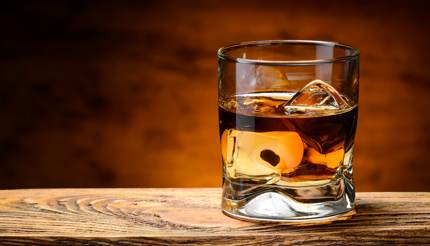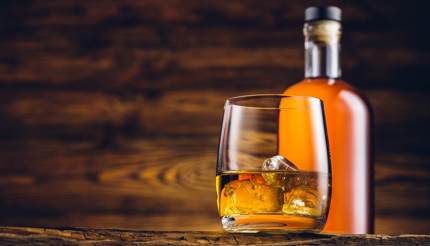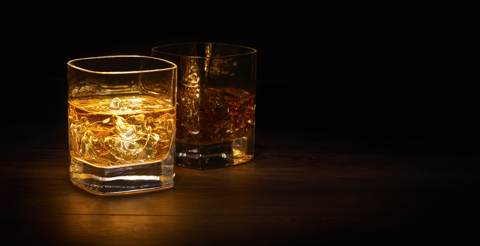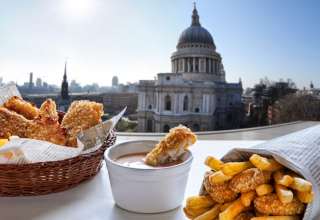[vc_row][vc_column][vc_column_text]
Whisky might be a global drink, but it’s far from a global recipe. Here’s our guide to various different versions of this drink around the world
Whisky is a drink enjoyed by all around the world, but it’s not the same everywhere you go. With each type varying in taste, production, age and country of origin, it’s no wonder things can get a little complicated. Luckily we’ve had our fair share of drinks over here, so here’s our short guide to separating your scotch from your bourbon.
What is a whisky?
First things first, let’s make sure we know what we mean when we are talking about whisky.
- The spelling is based on the country it comes from. The U.S. and Ireland commonly spell it “whiskey”, with all other countries choosing to omit the e. However, both spellings are legitimate.
- It is nearly always distilled from fermented grain mash. The exception to this is whiskey made from corn, which uses a mash made from at least 80% corn. Corn whiskey also doesn’t necessarily require ageing, with un-aged corn whiskeys sold by several commercial vendors
- The ingredients in a grain mash can vary depending on the desired outcome, but many will use either barley, corn, rye and wheat.
- Whisky is usually aged in wooden casks, generally made of charred white oak.
- The word whisky originates from the Gaelic word “uisge beatha” or “usquebaugh”, which means “water of life”.

Scotch
Scotch is a whisky which, surprise surprise, comes from Scotland.
- To qualify as a scotch it must be matured in oak casks in Scotland and made from malted barley.
- The quality and type of casks used, usually European or American oak, will have a big impact on the flavour of the final scotch
- This will also be dictated by the length of time it is matured for and how often the casks have been used before. Scotch whisky is aged for a minimum of 3 years, though many will age for longer before being bottled.
- It will be distilled into casks 60-63% ABV, and then diluted to reach the desired 40-46% ABV that it’s usually sold at.
Malt
- In a nutshell, malt whisky can only be made from malted barley and not blended with grain whisky.
- Its core ingredients are malted barley, water and yeast.
- It is made in two – or sometimes three – copper pot stills, usually in a batch process.
- Single malts are produced by an individual distilleries.
- The nuances in malt whiskies come from how long it is fermented, the style and size of the stills and how they are operated, right down to the type of condensers used.

Blended
- These are a blend of two or more different whiskeys, mixed together in one bottle and sold as a single whisky.
- These blends can be as simple as two different drinks combined, or as complicated as a mixture of up to 50 single whiskies.
- It usually a mixture of barrel-aged malt whisky and grain whisky.
- A blended malt scotch whisky is a blend of single malts from two or more distilleries.
- Blended grain scotch whisky is a blend of single grains from two or more distilleries.
- Blended scotch whiskeys make up 90% of the scotch category, and are a mix of both malt and grain whiskies sourced from several distilleries.
Bourbon
- It probably deserves a page all on its own, but Bourbon is a whiskey which gets it name from Kentucky, America and must be made from a grain mixture which is at least 51% corn.
- It can only be called Bourbon if it has been made in the United States.
- Bourbon must be distilled to no more than 80% abv and be no more than 62.5% abv when put into casks for ageing in new charred oak barrels.
- Bourbon has no minimum ageing period, but to be a straight Bourbon it must be aged for no less than two years and have no other colour, flavour or spirits added.

Tennessee whiskey
- Note Tennessey whiskey is essentially Bourbon but made in the state of Tennessee who did not want it to be labelled Bourbon. Namely Jack Daniel’s.
- The main difference is that the spirit goes through a charcoal filtering process, unlike normal Bourbon.
Rye whisky
- Rye whisky is often associated with whisky made in Canada.
- Ironically rye whisky does not always need to made from a rye mash.
- In Canada rye whiskies only have to some rye in them and often the mash is made with 1 part rye to 9 parts corn.
- In America rye whisky must be made from a mash with no less than 51% rye, with corn and barley usually making up the rest.
- It must be charred in new oak barrels distilled to less than 80% abv and no more than 62.5% when added to the cask.
Indian whisky
- This is alcohol distilled from molasses, neutral spirits that are roughly 10-12% malt whisky.
- There are very few restrictions on the process itself in India, leading to high variance in the composition and taste of various whiskeys.
- Due to the difference in climate, one year of ageing in India is equivalent to three years of ageing in Scotland.
- By strict EU definitions, many of these drinks should actually be labelled as rum, since they were primarily distilled from molasses rather than grains.
[/vc_column_text][/vc_column][/vc_row]






